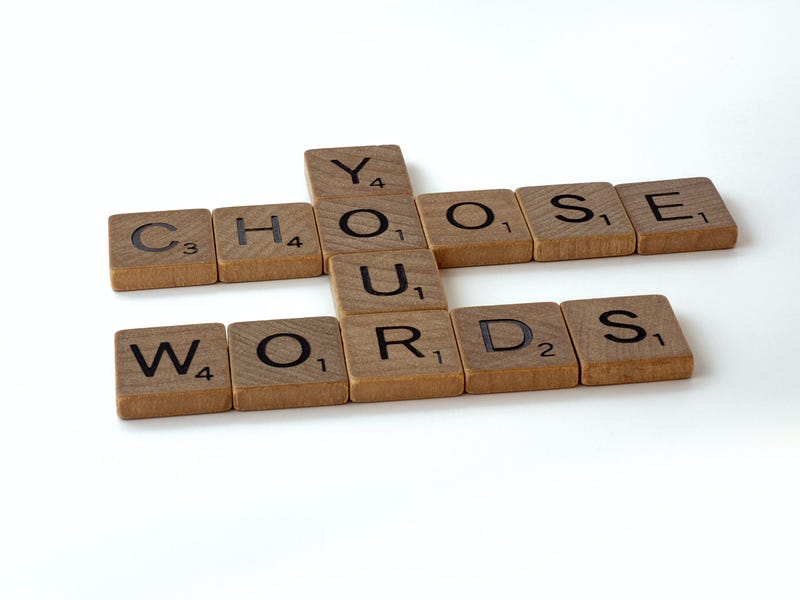Editorial Style Guides Are a Helpful Resource, Not Irrefutable Law

Photo by
on
Recently I saw a tweet that broke my copyediting heart:
https://twitter.com/DanaHerra/status/1404463541327912963?s=20
This comment is a perfect illustration of why many people fear copy editors.
Writers, journalists, and others think copy editors are too strict, too critical, too literal. We’re zealots of the style guide, which we champion as gospel, never deviating.
And if making our clients strictly adhere to a style guide to the point that it extinguishes all character, voice, and feeling from their work—so be it.
https://media.giphy.com/media/xT0GqfvuVpNqEf3z2w/giphy.gif
That’s an exaggeration, but it’s not far from the common perception. And I understand why that perception exists.
The style guide is copy editors’ primary resource. They likely reference it a dozen times or more daily. It contains not only rules for grammar, punctuation, and syntax but also style guidelines specific to an industry or organization.
The style guide is key to maintaining consistency across all content channels, which conveys professionalism and upholds the brand voice.
Most newspapers abide by Associated Press. The publishing industry adheres to the Chicago Manual of Style. Beyond those, every organization often has its own house style guide that further delineates its preferences.
As a copy editor, I love a good style guide. Every time I onboard a new client, I create a house style guide for them, unless they already have one. It helps me to figure out my client’s preferences and adhere to them in every piece I edit. It can also be shared with writers or other stakeholders involved in content production.
NASA puts it nicely:
“The purpose of style guidelines is to achieve consistency in prose style and usage so that readers can become absorbed in the content and avoid being distracted by curiosities in form. Authors and editors likewise will have an easier task when they compose and revise by the same set of rules.” —NASA style guide
However, I admit that there is such thing as overdependence on a style guide. They should be a helpful resource, not irrefutable law.
Let me tell you a story about the dark consequences of unflappable dedication to a style guide.
For one magazine I copyedited for, I managed a 274-page style guide. I inherited it: It was likely started decades earlier by the magazine’s first copy editor and had been added to over time.
Adapting to that style guide took me forever. Months after being hired, I was still uncovering new style rules, which meant I had not been implementing the “correct style” in that time.
The abrupt changes I made to adhere to the new rules I had uncovered made the other editors and writers grumble: “You hadn’t been making us do this before.”
Sometimes I even found contradictory rules within that style guide because it had passed through so many hands.
The irony is that style guides are meant to ensure consistency, but when they become as unwieldy as 274 pages, they are almost a detriment to it.
Which is why I felt so in accord with this tweet—the one that inspired the tweet above that broke my heart:
https://twitter.com/optimized3x/status/1404454843700465674?s=20
This is especially true today with multimedia content. Traditional style guides were created for print. That doesn’t make them irrelevant, but they do need to be able to evolve with modern language and media. So do copy editors.
Copy editors realize this. We are trying to be more flexible. I adjust my style of editing depending on the industry, audience, and medium. For example, it may not be okay to use incomplete sentences or slang in a white paper. But that’s practically requisite for social media and blogs.
When I create a style guide for clients, I don’t immediately force them to stick to AP or Chicago style. I ask them three things:
https://twitter.com/PristineEditing/status/1404490791280693260?s=20
Then I ensure consistency throughout the document. As I edit, I compile notes about repeat issues and preferences in a casual style guide.
My main goal in copyediting is readability. Will the audience read your piece and understand, using a minimal amount of brain power, what you are saying? Are you, the writer, saying what you think you’re saying?
Consistency is part of ensuring readability. A copy editor shouldn’t remove something the writer loves—such as killer lede—only for the sake of an arbitrary rule.
However, a caveat:
The copy editor should be strong and push back when something just doesn’t make sense and needs to be changed.
There’s a lot that copy editors can do to fight our “bad cop” persona (as longtime New Yorker copy editor Mary Norris describes us in her Ted Talk).
But applying a critical eye to others’ words is intrinsic to our role, and it’s inevitable that our notes are going to make someone unhappy at some point.
As long as your edit or change has a valid reason behind it, then most people will be receptive to it.
Hi, I’m Jaime, editor and owner of Pristine Editing LLC. To get to know me better, and for more editing tips, sign up for my quarterly email newsletter! You can also follow me on LinkedIn and Instagram. And don’t miss out on my free style guide template.
Why Book Authors Should Beware Combo Line and Copy Edits

Photo by
on
When I became aware of how many editors offer combo line and copy edits, I was aghast.
Because combo line and copy edits are the worst. And I am suspicious of editors who tout them as a quality offering.
This is a controversial opinion, I know.
When I recently shared a poll in Instagram Stories (pristine.editing.services) asking editors and authors whether they liked combo line and copy edits, 75 percent said yes! Many editors with decades of publishing experience offer them.
However, in my experience, a combo line and copy edit is bad for both the author and the editor. And there are editors who agree with me. Just check out the comments of my Instagram post.
I completed a few combo line and copy edits when I worked for a book-editing service provider about two years ago. I’ll never do another.
To the editors who say that line editing and copyediting complement each other well because they are both sentence-level editing, I say:
https://media.giphy.com/media/1BdtqhrkXU59XURZNN/giphy.gif
The goals, rules, and style of the two types of editing could not be more different. Calling them both sentence-level editing is about as misleading as saying your life coach is in the same field as your heart surgeon because they both care for your well-being.
Line editing is still in the realm of developmental or structural editing. Copyediting happens after the developmental or structural editing is over — it’s part of the process of preparing the manuscript for publication. Major changes can be made in line editing. They should definitely not be made in copyediting.
Line editing is interpretive. Line editors are free to change whatever they want in the name of smooth flow and lyricism.
Copyediting is technical. Expert copy editors will only change what is necessary for correct grammar, punctuation, spelling, syntax, repetition, and style. Otherwise, they don’t touch a word—even if they personally don’t like how something is phrased.
Line editing and copyediting are separate processes for a reason.
https://media.giphy.com/media/h5ozMZZrfMJR1Do4aK/giphy.gif
The books for which I did a combo line and copy edit needed a lot of work.
I rewrote a significant amount and left a lot of comments for the writer — which is totally okay! That’s what developmental editing is for.
What wasn’t okay was that I was expected to turn a messy manuscript into a nearly publication-ready document. That’s problematic because:
It sets unrealistic expectations and is a ton of work for the editor. Because the editor is trying to accomplish so much, a combo line and copy edit isn’t going to be as effective as separate line and copy edits. And that, of course, hurts authors.
The amount of work involved is one reason I doubt an expert editor would want to offer a combo line and copy edit. It makes me question the quality of the edit being offered. You get what you pay for.
Some of those who answered my Instagram poll said they like the combo edit because it seems natural to fix errors while line editing. That’s true! A good line editor should leave the document as clean as possible. But that’s not the editor’s № 1 priority in a line edit. And catching errors does not equate to a thorough copy edit.
As a line editor concentrates on fluid prose and improving a scene, is she also going to catch that one character’s eyes are brown on page 12 and hazel on page 132? Or that sneakily incorrect subject-verb agreement that most people would miss on a first pass? Or that non sequitur that wasn’t immediately obvious but, upon further consideration, doesn’t make sense? Or that the author wrote free reign when she meant to write free rein? Or that the character lost her keys on Wednesday, but on Friday, she says she lost her keys three days ago?
“But wouldn’t comments about timeline issues, etc., fall into the category of line editing?” asked one of my shrewd Instagram followers.
To me, weeding out lingering small plot gaps, timeline mismatches, and other hiccups is part of ensuring consistency—a golden rule of copyediting.
Perhaps addressing those issues does goes a little above and beyond a standard copy edit. That’s why I offer authors a copyediting package with margin commentary for pointing out those remaining low-level developmental concerns. The copyediting stage is an excellent time to do that because it’s the first close review of the story post-developmental editing. (Which is yet another reason the copy edit should be separate from the line edit or any other form of developmental editing.)
Line editors do deal with much larger fixes of plot gaps, timelines issues, and more. But because they’re so focused on those bigger issues and ensuring fluid prose, they just might miss the smaller stuff.
I understand that the combo line and copy edit is more tempting for independent authors financially. My guess is that editors offer the combo line and copy edit solely because it is so attractive to authors with tight budgets. And I am all for making publishing more accessible to everyone.
If a combo line and copy edit is the only way an author can afford line editing and copyediting, then do it, absolutely. It’s better than nothing.
But it seems there’s a widespread misconception that the combo line and copy edit is just as viable as separate line and copy edits. It’s not.
Also, it’s important to note that the combo line and copy edit is not necessarily cost-effective.
What happens if the line edits inspire the author to rewrite sections of the book? That happened in every combo line and copy edit I completed. The author then has to start (and pay for) at least the copyediting process all over again.
I’m sure there are exceptions to this strong opinion of mine. Perhaps there’s a reason editors offer combo line and copy edits that I just can’t see or haven’t heard.
Even as I write this post, three editors have voted that, yes, they do offer combo line and copy edits on my Twitter poll.
I welcome having my eyes opened on the subject. Comment below or send me an email at info@pristineediting.com.
Hi, I’m Jaime, editor and owner of Pristine Editing LLC. To get to know me better, and for more editing tips, sign up for my quarterly email newsletter! You can also follow me on LinkedIn and Instagram. And don’t miss out on my free style guide template.